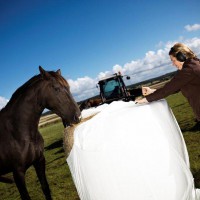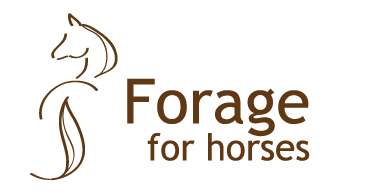High DM concentration increase the risk of mould in haylage

Drier wrapped forages with DM concentrations between 50 and 80% are called haylage and at this high DM the risk of mould growth increase, partly due to a larger portion of air pits and higher risk for puncturing the plastic. Mould requires air to be able to grow. Moulds can form toxins, mycotoxins, which have negative impact on horses. Effects of mould damaged forage can appear as anything from reduced performance to neurological disorders.
In this study the aim was to map the prevalence of mould in haylage and investigate correlations between the occurrence of mould and production factors. Samples were taken from 372 bales from 124 farms in Sweden and Norway and mould was found at 89% of the farms. In total 52 different species of fungi were found and the most common visible was Penicillium roqueforti.
The prevalence of mould was influenced by several production factors: more than eight layers of plastic film, air tight bales and wide-spreading of the crop during wilting in the field decreased the risk of mould while high DM concentration increased the risk. The prevalence of mould was also higher in bales from second harvest compared to first harvest. Ways to limit mould growth in bales are avoiding too high DM concentrations, using enough layers of plastic film around the bale and wide-spreading the crop during wilting. That wide-spreading of the fresh matter lead to decreased risk of mould can be due to faster wilting when wide-spreading.
To completely avoid mould growth in feed is difficult but some mould species are more harmful than others. P. roqueforti and several Fusarium species were found in this study and they can produce harmful toxins. Other frequently present moulds such as Arthrinium spp. which were also found have not proven to be harmful for horses. It is very difficult to determine by ocular inspection alone which mould species is growing on a haylage bale and therefore it is important to take measures to limit all mould growth.
Sara Muhonen, AgrD
